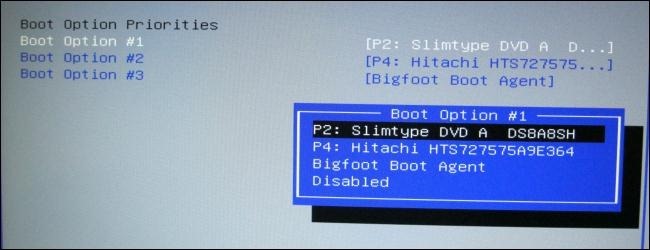
Customize Boot Menu Software You Want
First, make sure your PC is fully updated, has the user accounts and software you want to be included, and has the themes/settings you’d prefer. Click OK.There’s some preparation required before you create your windows recovery image, though this is reduced if you already keep your OS maintained and up-to-date. In the Windows Features window, expand the Device Lockdown node, and check or clear the checkbox for Unbranded Boot. In the Programs and Features window, click Turn Windows features on or off. In the Search the web and Windows field, type Programs and Features and either press Enter or tap or click Programs and Features to open it.
2) Click Close when You’re about to be signed out prompt shows up. Then Type shutdown /r /o into the box and hit Enter. 1) Open Run dialog box by pressing Win + R (Windows logo key and R key) at the same time. The option in the boot tab show configuration options listed inside the.Access to Boot Options Menu via Run dialog menu. The Boot tab is used to change the way Windows starts.
This is necessary if your operating system has problems starting or running.Pinning and unpinning tiles Click the Start button, then find the desired app from the list. You can use them to help you access and repair Windows 11, or Windows 10. A menu where you can access the Startup Settings, Safe Mode, and various other startup methods. Open Command Prompt via Windows Installation MediaThe Advanced Startup Options Menu is essentially a boot menu. Create a bootable Windows 10 install disk if you don't have one already.
To do so, type wpeinit and press “Enter”. (Optional) Initialize networking servicesYou only need to do this if you want to save your Windows 10 recovery image on a network drive. In this.Once your PC boots, ignore the setup screen and press “Shift + F10” to open the command-line interface.
/name is quite self-explanatory – an identifier for our image, while /description gives some further detail. /capturedir tells DISM the root folder of the disk to capture, which is C:\ for us. Be sure to type “exit” to leave diskpart before you continue.We’re now ready to capture our OS image, which is possible via the following command, which you should customize to suit your needs:Dism /capture-image /imagefile:D:\install.wim /capturedir:C:\ /name:"Recovery Partition" /description:"Custom Recovery Partition" /compress:none/imagefile: determines where to save the captured image and its name, install.wim. In our case, we can look at the size and use our previous knowledge to determine that ‘C’ is our OS/source drive and ‘D’ is the destination we want to save our recovery image to. In Command prompt, verify this by typing diskpart, then list vol.You’ll be faced with an output similar to below. Confirm your Windows 10 recovery drive with diskpartBefore you create your Windows recovery image, it’s worth double-checking that you know the correct letter for your Windows drive and to save your image to.
If you didn’t use an ISO to create your Windows Installation Media, you can obtain one by following this guide. If you’re unsure how to create a partition, follow our in-depth guide here.Mount a Windows 10 ISO by double-clicking it, ensuring its the same version as your current OS. We chose to make it 270 GB, rather than 269, just for some extra leeway. Create your Windows 10 Recovery PartitionIn a drive with enough spare space, create a recovery partition at least as large as the recovery image. Also check the size of the file, as this will become important in a second when we open our recovery partition creator. First off, check that it actually saved:In Windows Explorer, navigate to the place you saved your Windows recovery image (in our case I:/), and look for “install.wim” to verify the save was performed correctly.
:max_bytes(150000):strip_icc()/002_how-to-access-advanced-startup-options-in-windows-10-or-8-2626229-5bd38bd746e0fb0026014b0b.jpg)

Restart to Advanced Startup Options to select the recovery partitionTo check our recovery partition, which must boot to Advanced Startup options. In partition manager, hide the Drive letter by following this tutorial. Hide the Windows 10 recovery drive in Disk ManagementWe don’t need the recovery drive cluttering our UI anymore.
Verify that /sources/boot.wim shows up under our available options and select it if you’d like to restore your OS.


 0 kommentar(er)
0 kommentar(er)
